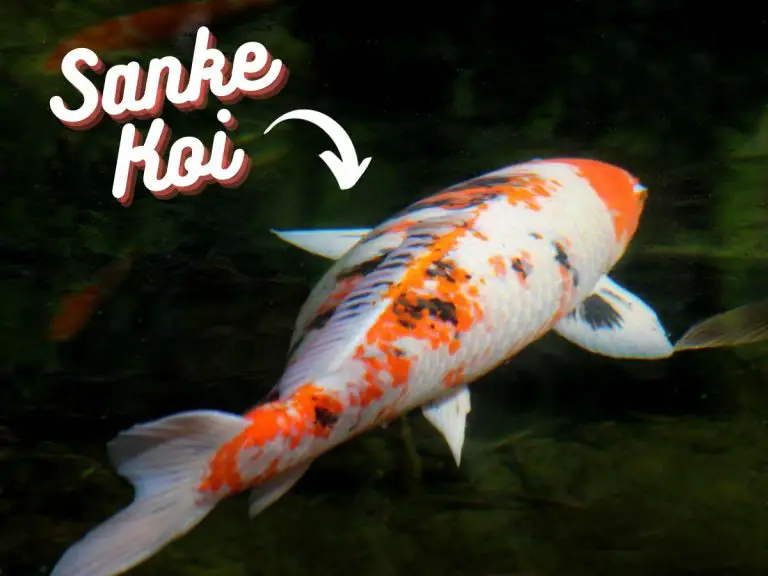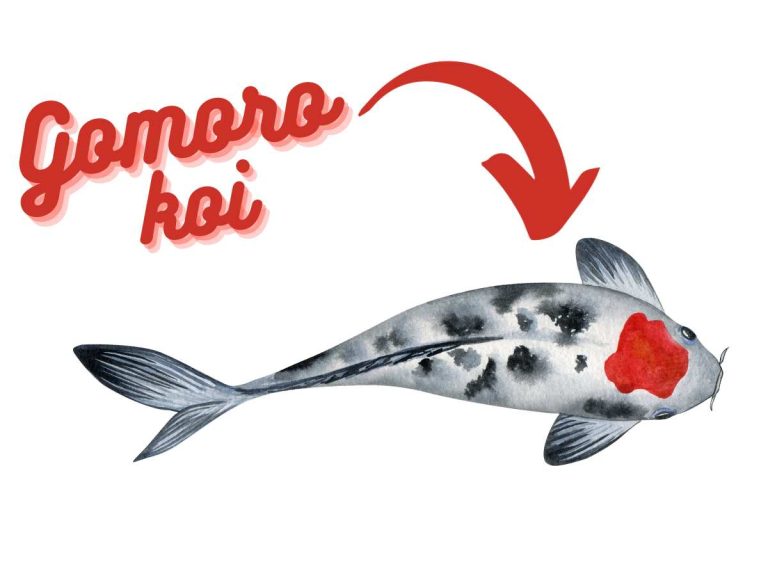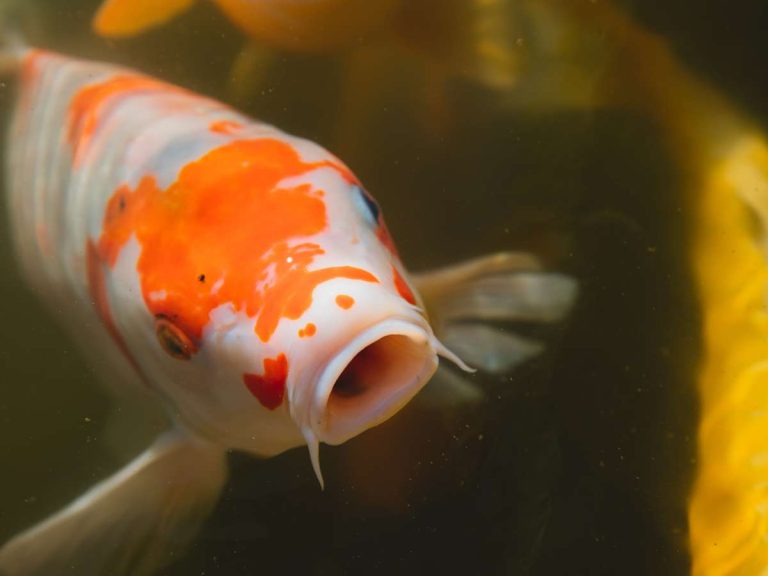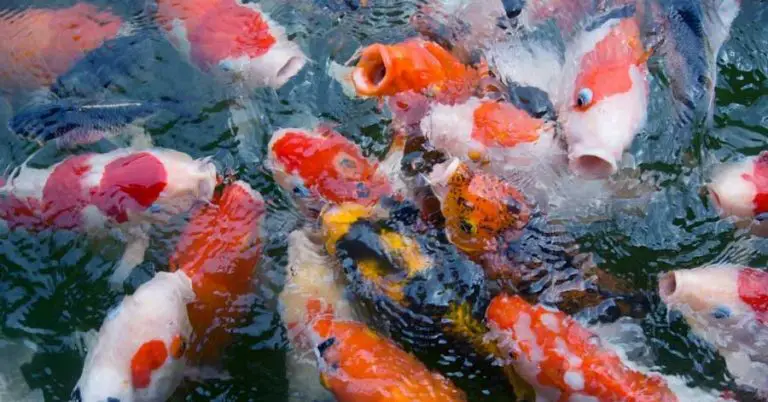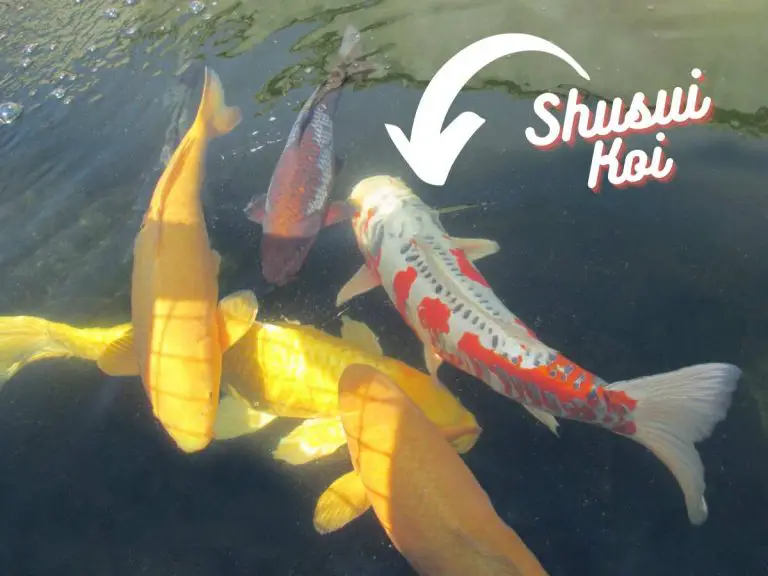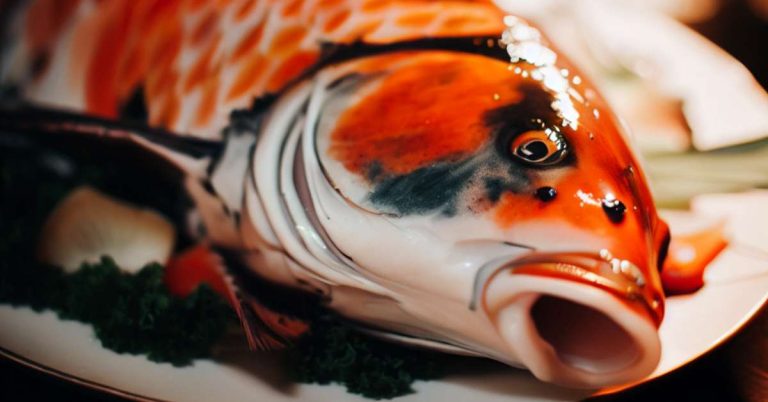Why is My Koi Staying in One Spot? Understanding the Causes and Solutions For Stationary Koi
Do you notice one of your Koi is spending a little too much time in one spot? If that’s causing you some concern, you’re not alone.
Koi fish behavior can sometimes be puzzling, especially for new owners. Rest assured, a koi staying in one spot is not necessarily a cause for alarm. In fact, it is quite normal for koi fish to remain stationary for extended periods.
Just like any other living creature, koi fish need to rest and conserve energy. It’s their way of rejuvenating and recovering from their active swimming and feeding periods. So, if you notice your koi fish staying in one spot, don’t worry too much – at least not yet.
That said, it’s always important to monitor your Koi’s behavior closely to ensure it remains within the normal range. Keep an eye out for any other signs of distress or illness, and be sure to provide a suitable environment with clean and well-maintained water in your pond.
Poor water quality is one of the main reasons why your Koi might be staying in one spot besides just having a rest.
To help put your mind at ease, let’s go over some of the reasons why a Koi might be staying one spot for longer than usual.
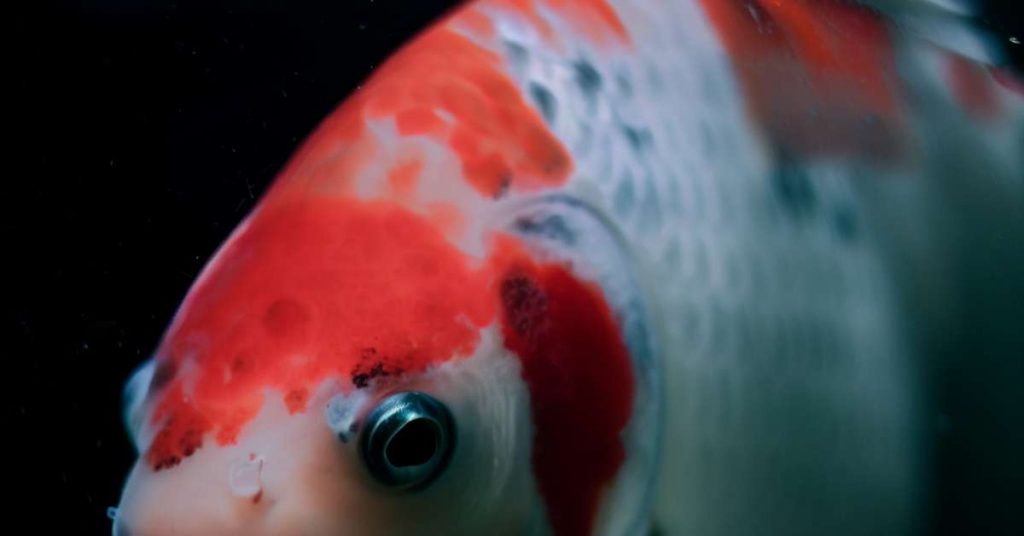
Why Do Koi Stay In One Spot? Understanding Koi Behavior
When it comes to understanding why your koi fish is staying in one spot and not swimming around, it’s important to have a grasp on their normal behaviors and how they might vary depending on different factors. Here are some common behaviors of koi fish:
Normal Resting Behaviors of Koi Fish
Koi fish, like many other aquatic creatures, need time to rest and conserve their energy. It’s perfectly normal for them to find a peaceful spot in the pond and stay there for periods of time. They may hang out and stay near the bottom or simply hover in one specific area, especially during the warmer months. This resting behavior helps them recover and recharge, so don’t worry if you see your koi staying still for a while.
Differences in Behavior Based on Various Factors
Age, health, and the environment can all play a role in a koi fish’s behavior. Younger koi tend to be more active and exploratory, constantly moving around and exploring their surroundings. On the other hand, older koi may prefer to find a cozy corner to rest and observe their domain.
Furthermore, factors like water temperature, water quality, and overall pond conditions can affect how koi behave. For example, during colder months, when the water temperature drops, koi tend to slow down and become more stationary. This is a natural reaction to the lower temperatures and is nothing to worry about.
Overall, it’s important to recognize that koi fish have their own individual personalities and preferences. Some may be more active and curious, while others may be more relaxed and calm. As long as there are no obvious signs of distress or illness, a koi staying in one spot is often just part of their natural behavior.
Potential Health Issues
When your koi fish stays in one spot, it is important to consider potential health issues as a possible cause. Several common health conditions can affect koi fish behavior. Some of these conditions include:
| Health Condition | Signs and Symptoms |
|---|---|
| Fin Rot | Tattered or frayed fins, discoloration, lethargy |
| Ich (White Spot Disease) | Small white spots on the body, flashing or rubbing against objects, loss of appetite |
| Swim Bladder Disease | Difficulty swimming, floating or sinking abnormally, loss of buoyancy control |
Observing your koi fish closely can help you identify signs of illness or injury. Look out for physical changes such as tattered or frayed fins, discoloration, or lesions on the skin. Notice if your fish is flashing or rubbing against objects, which can indicate discomfort or irritation. Changes in appetite, swimming behavior, or buoyancy control can also be signs of underlying health issues.
In addition to specific health conditions, stress can also greatly impact koi fish behavior. Stressors such as poor water quality, an overcrowded Koi pond, or aggressive tank mates can lead to prolonged periods of inactivity. It is important to maintain a healthy and stress-free environment for your koi fish to thrive.
Seeking professional veterinary help is crucial when dealing with potential health issues. A veterinarian with experience in treating fish can accurately diagnose the problem and provide appropriate treatment. They may recommend medication, changes in water conditions, or other interventions to address the underlying health concerns.
Assessing Pond Environment
In order to determine why your koi fish is staying in one spot, it’s crucial to assess the environment of your pond. The pond environment plays a significant role in the overall health and behavior of your fish.
A. Checking water quality parameters
Start by checking various water quality parameters such as temperature, pH levels, and ammonia levels. These factors can greatly impact the well-being of your koi. Ideally, the water temperature should be between 60-75 degrees Fahrenheit and the pH level should be in the range of 7.0-8.5. Ammonia levels should be undetectable, as high levels can be detrimental to the fish.
B. Understanding the importance of proper filtration and oxygenation
Adequate filtration and oxygenation are essential for a healthy pond. Proper filtration helps remove debris, excess nutrients, and toxins from the water, creating a clean and balanced environment for your koi. Additionally, sufficient oxygenation ensures that your fish can breathe properly, preventing stress and other health issues. Consider investing in a high-quality filtration system and an aerator to maintain optimal water conditions.
C. Common pond problems that may affect koi behavior
Several common pond problems can impact the behavior of your koi fish. Poor water clarity can make it difficult for them to see and navigate their surroundings, leading to stagnant behavior. Excessive algae growth can reduce oxygen levels in the water, causing fish to become sluggish. Additionally, overcrowding in the pond can result in increased stress levels for the fish. Take a close look at your pond and address any issues related to water clarity, algae control, and fish population to ensure a healthy and stimulating environment for your koi.
Troubleshooting and Solutions
When your koi fish is staying in one spot, there are several troubleshooting steps you can take to address the issue. Let’s dive into some solutions!
1. Improve Water Conditions in the Pond
The first step is to check the water quality parameters in your pond. Make sure the temperature is within the optimal range for koi fish, which is typically between 65°F and 75°F (18°C to 24°C). Additionally, test the pH levels to ensure they are within the suitable range of 7.0 to 8.5.
Another crucial aspect of maintaining good water quality is monitoring the ammonia levels. High levels of ammonia can be harmful to your koi and may cause them to exhibit abnormal behavior. If you notice ammonia levels are high, consider adding beneficial bacteria or conducting partial water changes to reduce ammonia buildup.
2. Address Specific Pond Issues
There are several common pond problems that could be affecting your koi’s behavior. One of these issues is poor filtration. Inadequate filtration can lead to particulate buildup, which may contribute to stagnant behavior in your fish. Make sure your pond’s filtration system is functioning properly and clean or replace filters as needed.
Lack of oxygenation is another potential issue. Koi fish require well-oxygenated water to thrive. Consider adding an aerator or fountain to enhance oxygen levels in your pond. This can help stimulate movement and alleviate stagnation in your koi.
3. Reduce Stress for Koi Fish
Stress can significantly impact the behavior of koi fish. To reduce stress, evaluate the surroundings of your pond. Are there any noisy or high-traffic areas nearby? Loud noises and disturbances can make koi feel anxious and cause them to seek shelter in one spot. Creating a calm and quiet environment will help promote more active behavior.
Another way to minimize stress is to provide hiding spots for your koi. Rocks, plants, or even specially designed koi tunnels can offer shelter and make your fish feel secure. These hiding spots can also provide opportunities for koi to explore and engage in natural behaviors.
Remember, addressing stagnant behavior in your koi fish requires patience and a systematic approach. By focusing on improving water conditions, addressing specific pond issues, and reducing stress, you can help your koi regain their vitality and exhibit their natural, active behavior.
Observation and Monitoring
Regularly observing the behavior of your koi fish is essential for their well-being. By closely watching them, you can quickly identify any changes or unusual patterns.
Maintaining a record of these changes can be incredibly helpful in pinpointing potential causes for your koi staying in one spot. Keep track of how long your koi is spending in the same location and note any significant changes in their behavior.
The Importance of Observing Fish Behavior Regularly
Make it a habit to spend a few minutes each day observing your koi. Take note of how they swim, how they interact with their surroundings, and how they interact with other fish in the pond.
This regular observation allows you to be familiar with your koi’s normal behavior, making it easier to spot any abnormalities. It’s like getting to know a friend or a family member – you start to notice when something isn’t quite right.
Maintaining a Record of Changes in Behavior
To effectively monitor your koi’s behavior, keep a log or journal where you can jot down any changes you observe. Note down the date, time, and specific behaviors you’ve noticed.
For example, you might write down that on a particular day, your koi spent an unusually long time near the surface of the water or that they appeared sluggish. These details can help you identify patterns and potential triggers that may be causing your koi to stay in one spot.
Recognizing Patterns and Potential Triggers for Stagnant Behavior
By analyzing your log or journal entries, you may identify patterns in your koi’s behavior. Look for any common triggers that coincide with their tendency to spend more time in one particular spot.
For instance, you might notice that your koi tends to stay in one spot more often during particularly hot days or after introducing a new decoration to the pond. These patterns can help you understand the factors that affect your koi’s behavior and enable you to take appropriate action.
Preventive Measures and Best Practices
Listed below are some tips for preventing koi fish from staying in one spot:
Providing a Suitable Environment for Koi Fish
1. Ensure that your pond size is appropriate for the number of koi you have. Overcrowding can cause stress and restrict their movement.
2. Maintain optimal water quality by regularly checking temperature, pH levels, and ammonia levels. Koi thrive in water with a temperature range of 59-77°F (15-25°C) and a pH level between 7.0 and 8.5. Refer to the following table for more details.
| Category | Key Points |
|---|---|
| pH Overview | pH is measured on a scale from 1 (acidic) to 14 (alkaline), with 7 being neutral. The ideal pH for koi is between 7.2 to 7.4. Acidosis can occur when the pH is too low (5.5), and Alkalosis when the pH is too high (9.5). Avoid extreme pH changes. |
| Causes of pH Fluctuation | High pH can be caused by external factors like lye from cement, rockwork, or the source water. Low pH is usually due to organic life, oxygen consumption from the nitrification process, and carbon dioxide from fish. |
| pH Control | To control pH, buffer the water to bind free ions. Baking soda (sodium bicarbonate) is a quick fix. Other options include oyster shell, crushed coral, dolomite, and limestone, but these react slower and should be placed near moving water. Test Alkalinity to check the buffering capacity. |
| Alkalinity Chart | Alkalinity can refer to a pH over 7.0 or the buffering capacity. The ideal bicarbonate concentration is between 90 to 120 ppm. Low Alkalinity (30 ppm) can cause pH swings. Baking soda can be used to raise Alkalinity and won’t push pH above 8.3. |
| Adjusting Alkalinity | To adjust Alkalinity, use baking soda. For example, for a 3,000-gallon pond with 30 ppm Alkalinity, you’d add 49 oz of baking soda to reach 100 ppm. Low Alkalinity can hinder the formation of beneficial bacteria in filters. |
| Important Notes | In the event of a severe pH crash, you can add large amounts of baking soda without exact measurement. It’s essential to test water parameters regularly for optimal pond health. |
3. Invest in a quality filtration system to keep the water clean and free from harmful toxins. A proper filtration system will also ensure sufficient oxygenation for the fish.
4. Provide adequate shade and shelter in the pond to create a safe and comfortable environment for your koi. This will help reduce stress and encourage them to explore different areas of the pond.
Encouraging Natural and Active Behavior
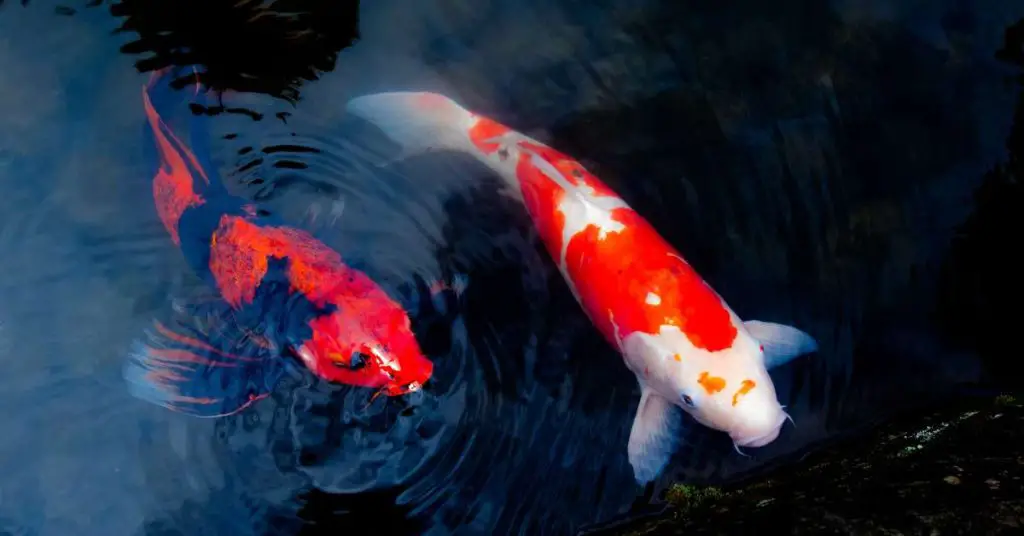
1. Feed your koi a balanced diet consisting of high-quality pellets, vegetables, and occasionally, live or frozen treats. Ensure that you are not overfeeding them, as this can lead to health issues and sedentary behavior.
2. Implement regular training sessions to keep your koi fish active and engaged. Use food rewards to teach them simple tricks or encourage them to swim through hoops or tunnels. This will help stimulate their natural instincts and keep them active.
3. Introduce variety and enrichment to the pond by adding floating plants, rocks, or hiding spots. This will provide new stimuli for the koi and encourage them to explore different areas of the pond.
4. Avoid sudden changes in the pond environment or routine, as koi fish are sensitive creatures. Gradual modifications will help them adapt and minimize stress levels.
Remember, creating a suitable environment and encouraging natural behavior is crucial for the overall well-being of your koi fish. By implementing these preventive measures, you can minimize the likelihood of your koi staying in one spot and promote a healthy and active lifestyle for these beautiful creatures.
Conclusion
So there you have it, a comprehensive guide to understanding why your koi might be staying in one spot. We’ve covered a lot of ground, from the various factors that can influence fish behavior to potential health issues and environmental considerations. Let’s quickly recap the main points:
- Koi fish, like any other creature, have their own set of normal behaviors and resting patterns.
- However, if your koi seems unusually stagnant, it could be a sign of an underlying health problem.
- Stress is a big factor that can impact fish behavior, so it’s important to create a stress-free environment.
- Regularly monitoring water quality parameters and addressing any issues promptly is crucial for your koi’s well-being.
- Troubleshooting pond problems and taking steps to improve conditions can help alleviate stagnant behavior.
- Observation and monitoring allow you to identify patterns and potential triggers for your koi’s behavior.
- Implementing preventive measures and best practices can help prevent stagnant behavior in the future.
Remember, taking action and addressing stagnant behavior promptly is key. Your koi’s well-being depends on it! If you need further guidance, don’t hesitate to reach out to a professional veterinarian with experience in fish care. Keep learning and exploring the fascinating world of koi fish, and enjoy the rewarding experience of creating a thriving pond environment for these beautiful creatures.
Related Questions
Can koi fish stay in one spot due to boredom?
While boredom is not typically a primary cause for koi staying in one spot, it can contribute to their behavior. Providing a stimulating environment with ample space, hiding spots, and interaction can help prevent boredom and encourage active swimming.
Does water temperature affect koi fish behavior?
Yes, water temperature can have an impact on koi fish behavior. Extreme temperatures, either too hot or too cold, can cause koi to become sluggish and stay in one spot. Maintaining optimal water temperature within the recommended range for koi fish is essential for their overall health and activity levels.

